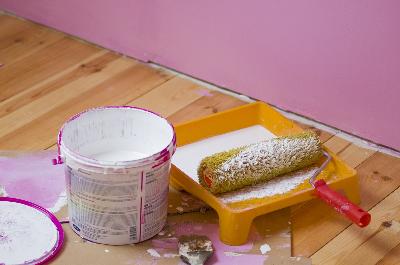Home Interior Painting Tips

Interior painting can dramatically alter the look and feel of a room. Whether you are preparing to sell your home, maintaining cracking paint or wanting to change the character of a room, a good paint job requires proper preparation, tools and techniques. Rushing a paint job is likely to result in disappointment.
-
Preparation
-
Preparation is one of the key elements to a good paint job. Paint requires a clean, smooth surface to spread evenly and stick well. Clean all the walls you plan to paint before starting your paint job, and use a paint scraper to remove paint chips. Sand down pronounced edges where large paint chips are removed, but be sure to remove sandpaper filings with a tack cloth or dust rag before painting. If there are large gouges in the surface, fill them in with spackle before applying paint.
When you are ready to paint, use dropcloths to cover all the surfaces in the room that are not going to be painted. Apply painter's tape along edges and corners. Meticulous taping can help prevent accidentally painting on the wrong surface, and it makes painting along corners and molding easier.
Paint Instructions
-
The proper way to apply paint and the conditions necessary for drying can vary from one type of paint to another. Always read and follow the instructions on the paint can. Take note of how much area the paint is meant to cover and compare that to the area of the surfaces you plan to paint. If the paint has harmful fumes, work in a well-ventilated room and consider using fans and a mask to help protect you from fumes.
Paint Technique
-
Use long, vertical strokes when painting with a brush. Horizontal strokes are more likely to result in running paint and are more difficult to control. If you are using a paint roller, roll it in paint and then roll it up and down a few times on the sloped part of the paint pan to roll off excess paint. Paint a "W" shape with the roller, moving horizontally along the wall, and then fill in the "W" with the rest of the paint on the roller. Apply more paint to the roller and work your way horizontally across the wall in this manner. When you are finished painting, refer to the paint can for brush cleaning instructions. Latex paint can be removed with water, while oil-based paints require paint thinner or other solvents.
-